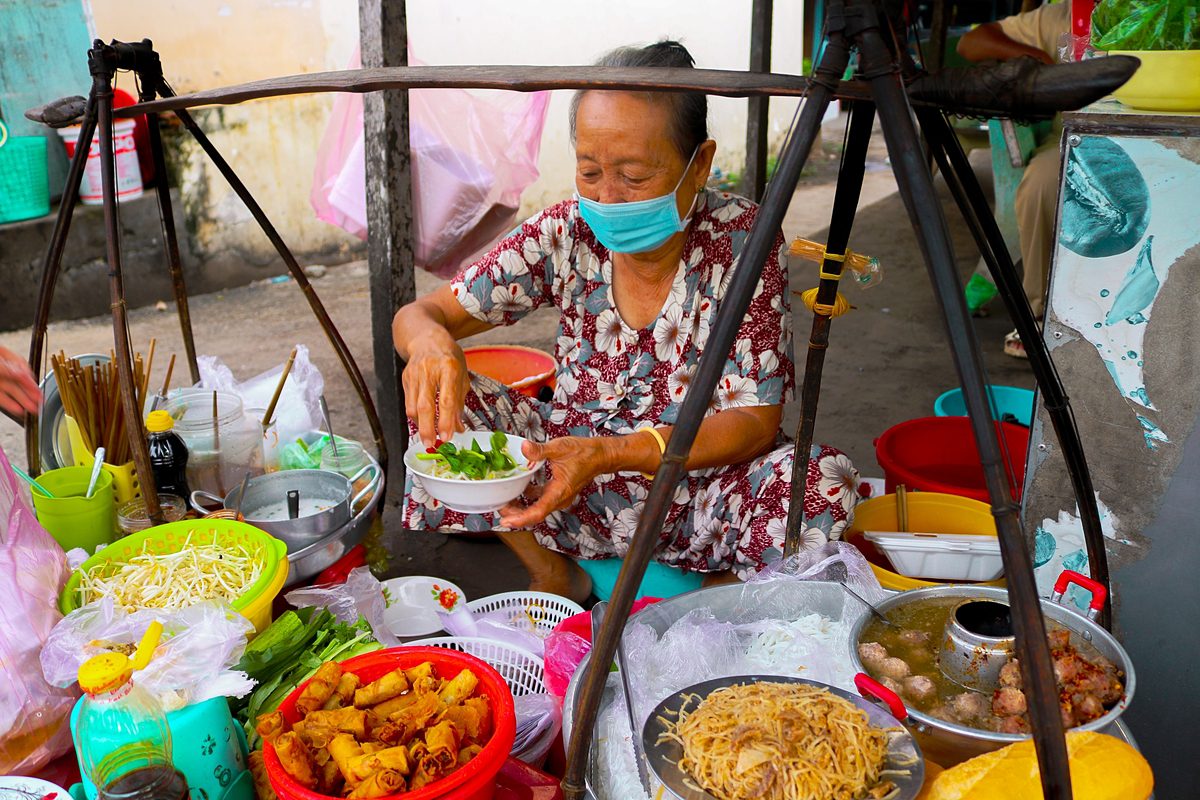Mekong vendor serves up Vietnamese noodles with coconut cream for two decades
A banh tam bi (thick noodles with coconut cream) shoulder-pole vendor in An Giang Province has survived for the past 20 years thanks to word of mouth.
 |
|
Banh tam bi is often regarded as a popular street food dish in the Mekong Delta, Vietnam’s rice basket, because of its delicious and appealing taste. On a tour of An Giang that borders Cambodia, don’t forget to visit the shoulder-pole vendor near Long Hung crossroads in Tan Chau Town, going strong for more than two decades. |
 |
|
Banh tam noodles are different across the Mekong Delta, depending on the type of rice available in the area and the noodle-making process. No one knows the exact origin of the dish but many people in the delta believe it originated from Bac Lieu Province. |
 |
|
The protein component of the dish is a mix of lean pork sliced into thin strips, shredded pig skin (bi) and thinh, a fragrant powder made of toasted rice. |
 |
|
Across the Mekong Delta, the dish is also served with pork meatballs (xiu mai) cooked in the style of ethnic Chinese people in An Giang. Small pork meatballs are kept in a charcoal pot to keep warm. |
 |
|
Unlike banh tam bi in Saigon, the version in An Giang also includes fried spring rolls. |
 |
|
The soul of the dish lies in coconut cream cooked in a small charcoal pot, including a little salt, sugar, and tapioca flour (or cornstarch) to ensure a sweet, fatty taste. Banh tam bi would be incomplete without being drenched in coconut cream. |
 |
|
A bowl typically features fresh herbs and bean sprouts placed at the bottom of the bowl, thick noodles, shredded pork skin, pork meatballs, spring rolls, a little pickleddaikon and carrots, along with sweet fish sauce. Finally, coconut cream is added on top. |
Source: E.vnexpress.net


